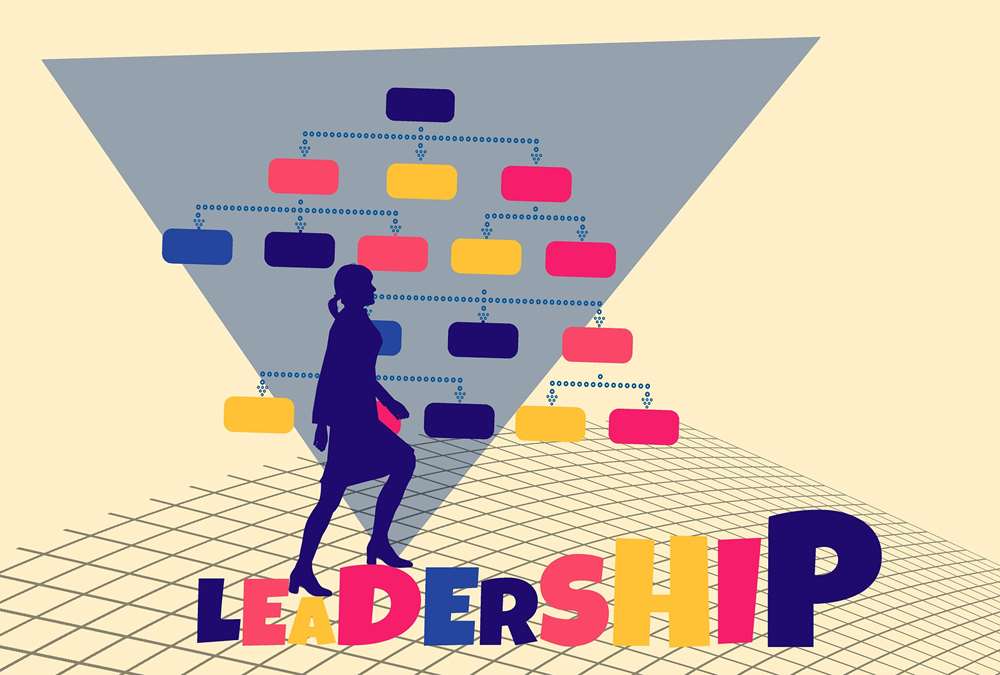- Home
- Business Processes
- Industry Knowledge
- Aerospace Industry
- Automotive Industry
- Banking Domain
- BFSI Industry
- Consumer/ FMCG Industry
- Chemicals Industry
- Engineering & Construction
- Energy Industry
- Education Domain
- Finance Domain
- Hospitality Domain
- Healthcare Industry
- Insurance Domain
- Retail Industry
- Travel and Tourism Domain
- Telecom Industry
- Leadership Skills
- eLearning
- Home
- Domain Knowledge
- Leadership Styles
- Bureaucratic Leadership Style
Bureaucratic Leadership Style
Bureaucratic leadership relies on a clear chain of command and strict regulations. Bureaucratic leadership style is a very decent style for work involving serious safety risks, such as handling toxic substances, moving large objects. The focus is on compliance with rules and laid down procedures to make sure that the group is doing their job correctly and safely. Learn some advantages and disadvantages of this style and situations in which this style could prove to be effective.
What is the Bureaucracy?
The term bureaucracy is referred to a group of non-elected officials within a government or other institution that implements the rules, laws, ideas, and functions of their institution. The term "bureaucracy" was created from the French word bureau, meaning desk or office. Weber describes six bureaucratic values that are vital in obtaining a functioning and self-sufficient business. These six characteristics include imperial positions, rule-governed decision making, professionalism, a chain of command, defined responsibilities, and bounded authority. Defined responsibility is an important value in bureaucracy and demands that an office or workplace must have fields of specialization in order to diversify the company. Every worker must know the responsibilities of his job in the most intimate detail possible. Further, there must be a stable, defined set of general rules for the employees that they must abide by at all times.
The Bureaucratic Leader:
The bureaucratic leader is very structured and follows the procedures in the letter and spirit as they have been established by the organization. Leaders ensure that all the steps had been followed prior to sending it to the next level of authority. A natural bureaucratic leader will create detailed instructions for other members of a group and will expect the members to follow a close set of standards. Everything is done in an exact, specific way, working "by the book", following rules rigorously. The emphasis is on compliance and it is ensured that their people follow procedures precisely. If it isn't covered by the book, the manager refers to the next level above him or her.
The Bureaucratic Leadership Style:
It is a style that is diffused among a number of departments or people and there is a strictest of rules. This is a classic style of leadership and is used quite a lot in organizations that don’t encourage innovation and change and by leaders who may be insecure and uncertain in what their role may be. This type of leadership has no space to explore new ways to solve problems and is usually slow-paced to ensure approval of the ladders stated by the company. Leaders that try to speed up the process usually lead to frustration and anxiety in the team. Followers/employees operating within a bureaucracy are given very little choice as to how they play their roles and the vast majority of their day-to-day tasks will be governed by the rule book.
Situations where Effective:
- Employees are performing routine tasks over and over. Bureaucratic leadership is very useful in organizations where employees do routine tasks (as in manufacturing). When the job is routine and doesn’t change over a long period of time, that kind of job generally requires a definite set of safety rules or working guidelines in order to comply with the law.
- Employees need to understand certain standards or procedures. Following a certain set of standards or procedures ensures the safety of equipment and mankind. Situations where there is a need to ensure safety and/or accuracy. For example where the work environment is dangerous and specific sets of procedures are necessary to ensure safety like chemistry-related jobs that involve working with hazardous material to ensure safety
- Employees are working with dangerous or delicate equipment that requires a definite set of procedures to operate or when Safety or security training is being conducted
- Employees are performing tasks that require handling cash. Jobs that involve working with large amounts of money to ensure strict adherence to policies and procedures to avoid loss/pilferage
- Jobs such as construction work where a defined set of standards can be implemented
- This approach to leadership is commonly used in uniformed and non-uniformed public services. This type of leader would usually get very successful in working in government roles. Universities, schools, colleges, and government organizations usually require this type of leader in its organizations to ensure quality, increase security, and minimize malpractices.
Situations where Ineffective:
- Work habits forms that are hard to break, especially if they are no longer useful
- Employees lose their interest in their jobs and in their fellow workers
- Employees do only what is expected of them and no more
- This style is highly ineffective in teams and organizations that rely on flexibility, creativity, or innovation
- This style does not promote creativity and advancement of skills and knowledge as the success is based on the ability to conform to and uphold rules, rather than qualifications or expertise
- This style brings down motivation levels and causes resentment as the expertise or advice of followers/team members is not valued in this approach
Conclusion:
In conclusion, this leadership style is very effective in certain situations that demand this type of approach as this behavior ensures that the team and tasks are very organized and everything is precisely done as specified or planned. The entire team understands their job profile and expectations and ensures good control over the situation. On the flip slide, this style is not suitable for most of the jobs of the 21st Century where the followers are expected to lead and show creativity and innovation. This leadership style is task-focused and is often met with a wince from a management team and is generally disliked by the followers.
Related Links
You May Also Like
-
What are the functions which a leader does to establish as a leader? What are the activities undertaken by them to become great leaders, rather revolutionary leaders? The most important tasks done by a leader in all situations are defining the vision, mission, and goals, leading the team, administrative functions, motivating followers, decision making and conflict resolution, and continuous development.
-
A good leadership style is something that every effective leader must have in order to succeed, but identifying what that entails or does not entails might be difficult to understand. Most of the research on leadership focuses on the exemplary, best practices, and positive attributes of effective and successful leaders. This article talks about a new approach to learn leadership using lessons from bad leadership. That is the lessons to be learned by examining leaders who have not effectively exercised their power, authority, or influence.
-
Narrative leadership is interpreted as the leader who aspires to construct leadership by telling stories. Leadership is a task of persuasion, of winning people’s minds and hearts. Storytelling is thus inherently suited for the task of leadership. Learn about the narrative leadership style and how to use this style to inspire and motivate followers or to manage change.
-
Adaptive leadership is a style of leadership that emphasizes the importance of each and every person and role within the company. Adaptive leadership views the organization as an ever-changing, living organization, where employees can learn, adapt, and grow. Adaptive leaders mobilize people towards a common goal and also have the courage to experiment with new ideas and approaches. Adaptive leadership is the practice of mobilizing groups of people to tackle tough challenges and thrive. Learn how to adopt this style and how to become an adaptive leader!
-
Laissez-faire is a style of leadership that affords the group members a great deal of independence. Tasks are delegated to the group members and they are responsible to see the project through to fruition. Research has shown that this style of leadership leads to the lowest levels of productivity. This article explains this style and covers the implications of having a hands-off approach and the situations where this style could be effective.
-
There are four characteristics of leadership that help us to understand the character of leadership as a concept. 1. Leadership is a process, 2. Leadership involves influence, 3. Leadership always occurs in a group context and 4. Leadership involves goal attainment. These are the four components that make up the character of the 'leadership' term and help us to define the leadership concept. All of these components of leadership have common characteristics.
-
Facilitative Leadership is all about involving the employees in the decision-making process at all levels enhancing their sense of ownership, responsibility, and motivation. Facilitative leadership style uses a number of indirect communication patterns to help the group reach consensus and build commitment for the decision taken. To be effective in modern organizations, managers need to become facilitative leaders, learn what it means to be a one.
-
Participative leadership is one of the most effective styles and creates higher productivity, better contributions from group members, and increased group morale. The democratic leadership style consists of the leader sharing the decision-making abilities with group members by promoting the interests of the group members. Learn more about this leadership style and situations when it is effective.
-
Authentic leadership is an approach to leadership that emphasizes building the leader's legitimacy through honest relationships with followers which value their input and are built on an ethical foundation. The authentic leader acts upon his or her values and beliefs, and inspires others to do the same, is committed to know and develop oneself. Are you committed to developing yourself; know your motivations and the purpose of your leadership? Read this article to know more about authentic leadership style and discovering your authentic self.
-
Crisis leadership is a very important part of leading in today's world. The skills a leader needs in order to guide people during a crisis are different from the skills needed to help a group grow. Are you a good crisis leader? What is your leadership style in case of a business crisis situation? A business crisis can test the strongest of leaders, read this article to explore how to ensure you’re ready to take action and weather the storm when one strikes you.
Explore Our Free Training Articles or
Sign Up to Start With Our eLearning Courses

About Us
Learning
© 2023 TechnoFunc, All Rights Reserved










